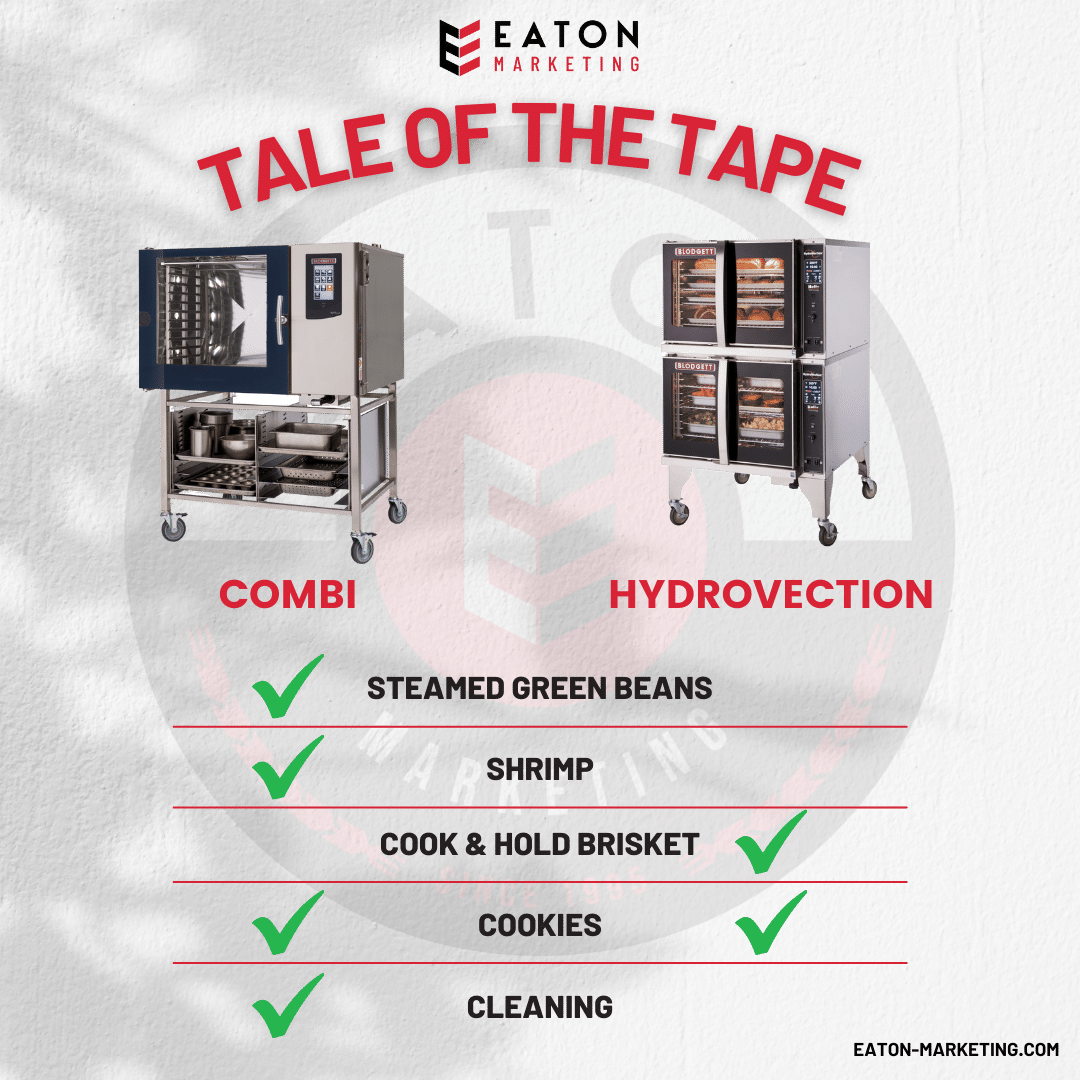Comparing The Blodgett HydroVection and Combi Ovens
The end goal of any cooking process is a quality, tasty dish that's served efficiently and with ingredients cooked to ideal conditions. Depending on the type of operation, the volume of output, and other important factors, there could be ways to achieve these results based on good, better, and the best equipment options.
So Eaton Marketing decided to do a chef's challenge to see which performed better in certain situations - a Combi or Hydrovection oven. But what's the difference between the two?
What's a Combi?
Combi ovens provide a combination of steam and convection oven capabilities. When in convection mode, they circulate dry heat, which can be ideal for baked goods such as bread and croissants.
When a combi oven is in straight steam mode, operators can enjoy all the typical benefits of steam cooking, preserving the structure of delicate ingredients like vegetables and seafood.
What's HydroVection?
Hydrovection ovens are compact and combine convection with steam to cook quicker. By forcing air into the oven cavity, users experience a 30% faster cook time and 20% more yield than when using a conventional convection oven.
Combi vs. HydroVection
Both a HydroVection and a Combi oven are great but sometimes one oven is better for certain applications than others. So Chef Rick, representing the Blodgett HydroVection, and Chef Matt representing the Blodgett Combi, decided to do a side-by-side challenge.
Here are the test results:

If you're ready to learn more about Blodgett Combi and HydorVection ovens, we're ready to talk.




